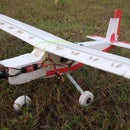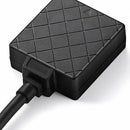Introduction: Basics of Arduino
Arduino is an open-source electronics platform that makes it easy for anyone to create interactive projects. With its simple programming language and readily available components, Arduino is perfect for beginners and experienced makers alike.
What is Arduino?
Arduino is a family of single-board microcontrollers that consist of a printed circuit board with a microcontroller chip, input / output pins, a power supply, and a USB connector. These boards can be programmed to read inputs (like sensors) and control outputs (like LEDs, motors, and speakers). This makes it possible to create all sorts of amazing projects, from simple blinking LEDs to complex robots and home automation systems.
What can Arduino do?
Arduino offers an endless number of applications! Here are just few examples.
Blink LEDs: This is a classic Arduino project that is a great way to get started.
Read sensors: Arduino can be used to read data from a variety of sensors, such as temperature sensors, light sensors, and motion sensors. This data can then be used to control other things, such as turning on a light when it gets dark or starting a motor when someone walks by.
Control motors and servos: Arduino can be used to control motors and servos, which allows you to create all sorts of moving projects, such as robots, animatronics, and 3D printers.
Connect to the internet: Some Arduino boards have built-in Wi-Fi or Ethernet connectivity, which allows you to connect your projects to the internet. This opens up a whole new world of possibilities, such as creating your own weather station or controlling your home appliances from your phone.
Supplies
Step 1: Get an Arduino Board
There are many different Arduino boards available, so you can choose one that is right for your project. For beginners, the Arduino Uno is a good option.
Step 2: Download the Arduino IDE.
The Arduino IDE is the software you will use to write and upload code to your Arduino board. You can download it for free from the Arduino website.
Step 3: Connect Your Arduino Board to Your Computer.
Once you have your board and IDE, you can connect them with a USB cable.
Step 4: Write Some Code!
The Arduino programming language is based on C and C++, but it is much simpler. There are many resources available online to help you learn how to code Arduino.
Step 5: Upload Your Code to Your Arduino Board.
Once you have written your code, you can upload it to your Arduino board with the Arduino IDE.
Step 6: Test Your Project!
Once your code is uploaded, you can test your project and see if it works as you intended.













